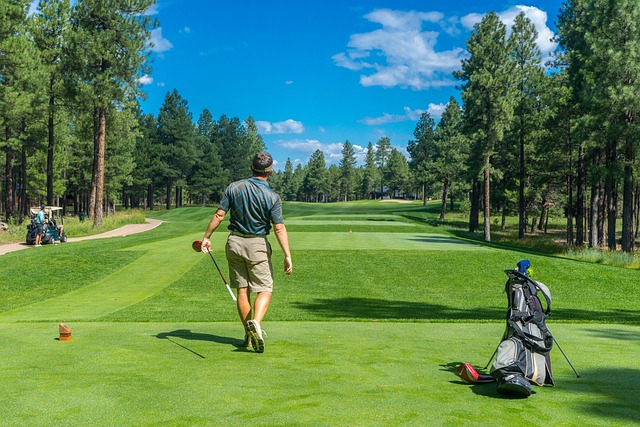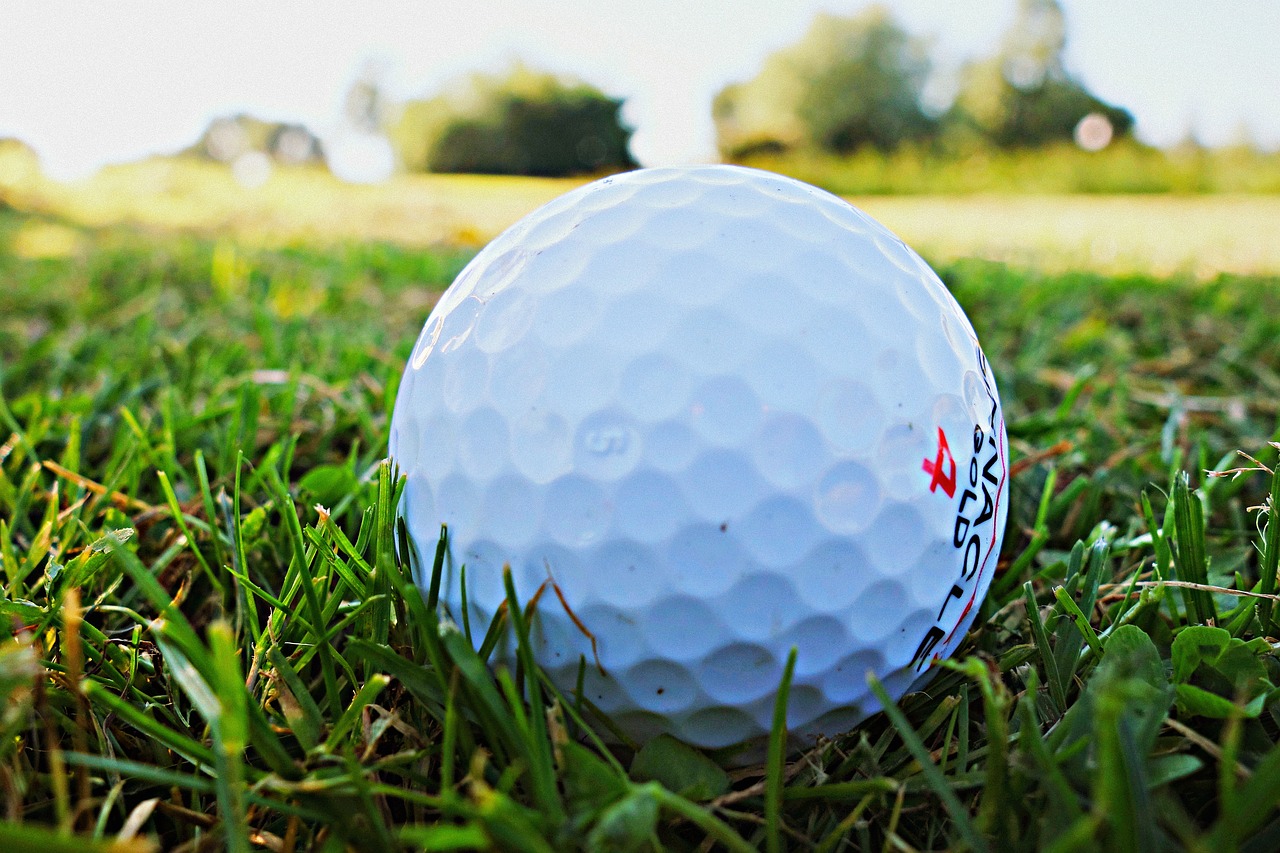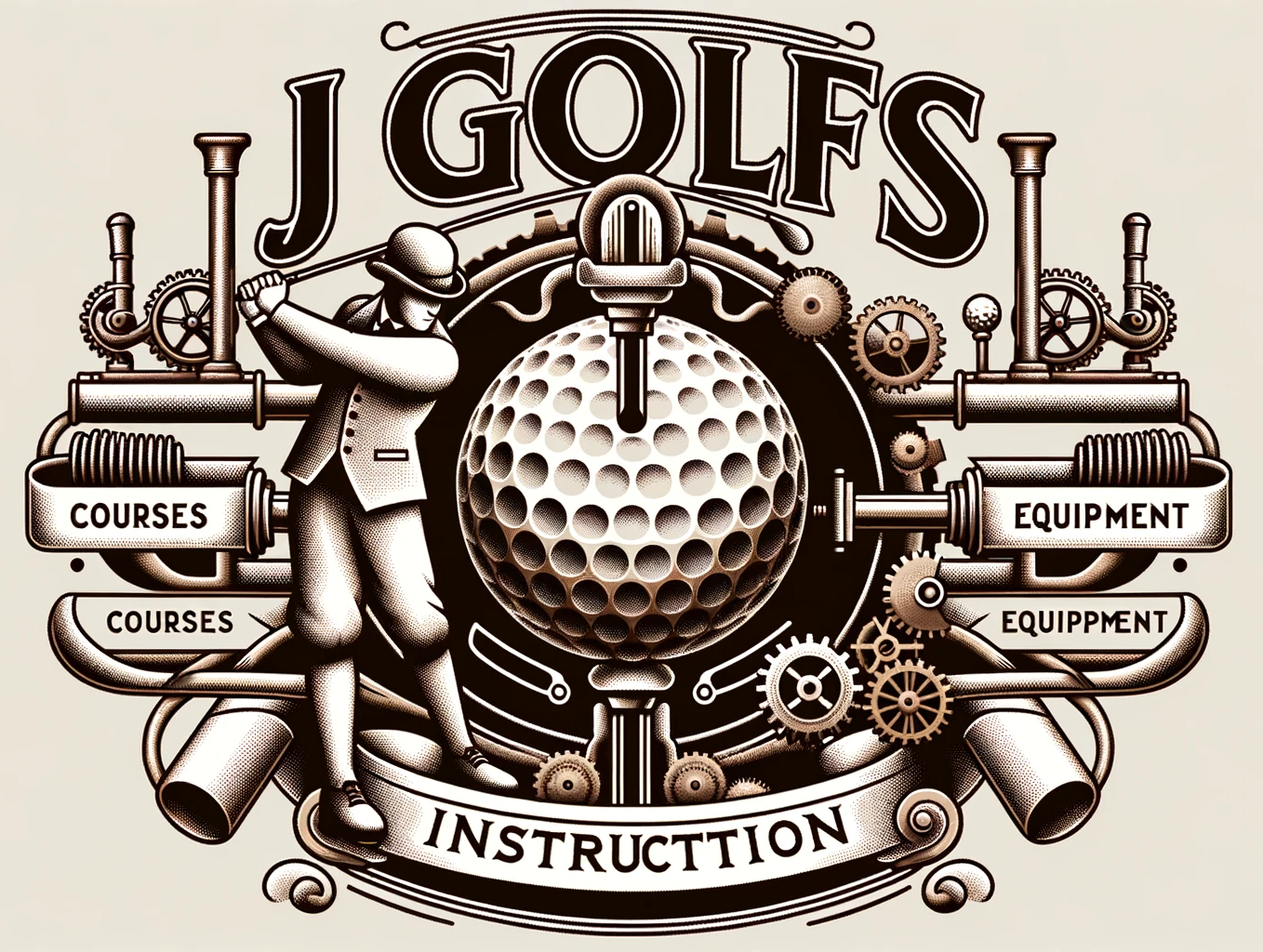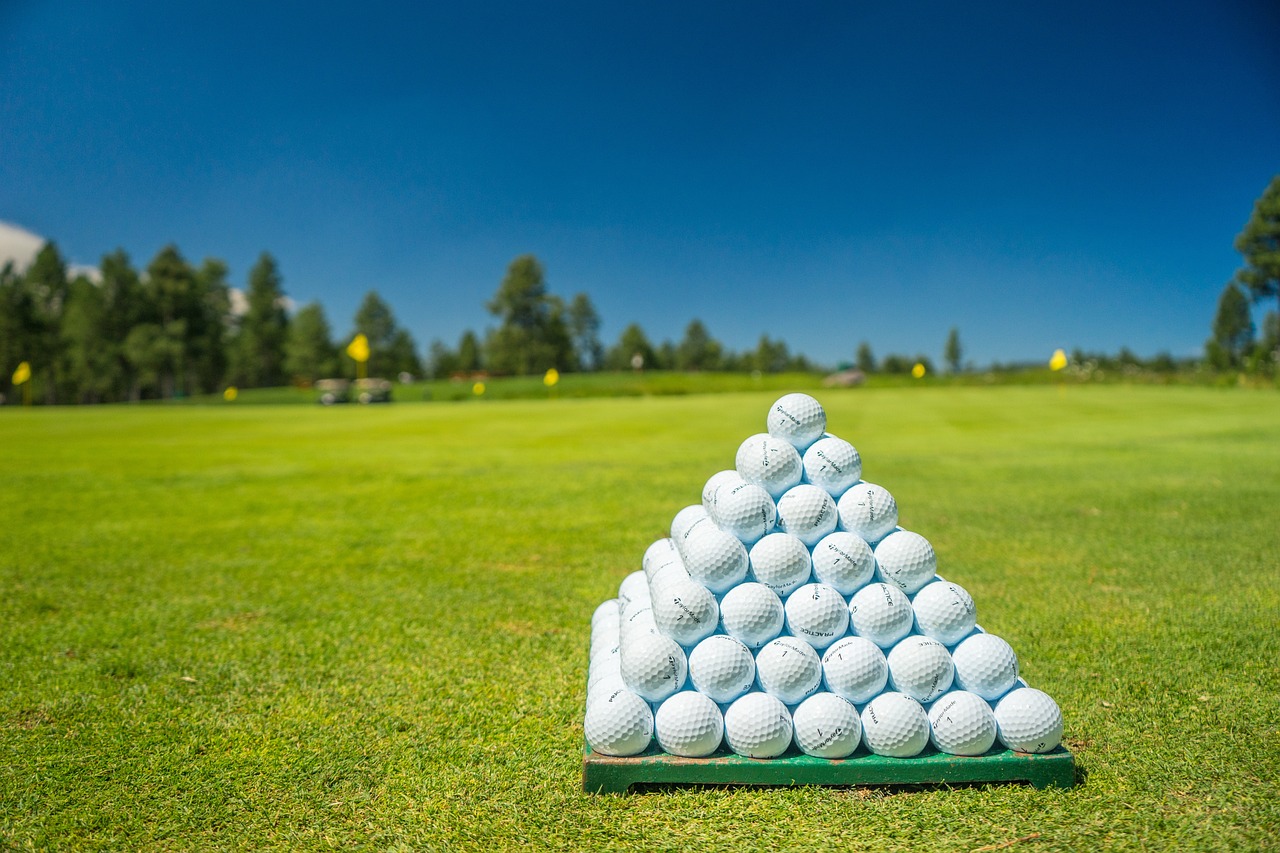
Golfing Gear Maintenance: Extending The Lifespan Of Your Clubs And Equipment
If you’re an avid golfer, you know just how important it is to take care of your golfing gear. From the clubs to the equipment, proper maintenance can make all the difference in the longevity and performance of your gear. In this comprehensive and detailed article, we will explore various tips and tricks on how to extend the lifespan of your clubs and equipment. Whether you’re a beginner or a seasoned pro, these maintenance strategies are applicable to golfers of all ages and skill levels. So grab your clubs and get ready to learn how to keep them in top-notch condition for years to come!
1. Introduction
Welcome to the world of golfing! As an avid golfer, you know that having the right gear is essential for a successful game. But did you know that proper maintenance of your golfing equipment is just as important? Golfing gear maintenance can greatly enhance your performance on the course, save you money in the long run, prevent damage to your clubs, and increase their lifespan. In this comprehensive guide, we will walk you through the step-by-step process of cleaning and maintaining your golf clubs, as well as other essential gear such as your golf bag, balls, and accessories.

2. Importance of Golfing Gear Maintenance
2.1 Enhances Performance
Maintaining your golfing gear plays a crucial role in enhancing your performance on the course. Over time, dirt, grass, and debris can accumulate on your clubheads, affecting their ability to make clean and accurate contact with the golf ball. By regularly cleaning and maintaining your clubs, you ensure that they remain in optimal condition, allowing you to achieve consistent and precise shots. Properly maintained gear also allows for better grip and control, which can significantly improve your swing and overall game.
2.2 Saves Money
Investing in high-quality golf clubs and equipment can be quite expensive, so it’s essential to protect your investment by properly maintaining them. Regular cleaning and maintenance prevent major wear and tear, reducing the need for costly repairs or replacements. By taking the time to care for your gear, you can save money in the long run and enjoy your golfing equipment for many years to come.
2.3 Prevents Damage
Golfing gear is subjected to harsh conditions on the course, including exposure to dirt, moisture, and even impacts from golf balls and other objects. Proper maintenance helps prevent damage to your clubs and other equipment. Regularly inspecting your gear for signs of wear and tear allows you to identify and address potential issues before they become more significant problems. By taking a proactive approach to maintenance, you can prevent minor damages from turning into costly repairs or replacements.
2.4 Increases Lifespan
By following a regular maintenance routine for your golfing gear, you can significantly increase its lifespan. Proper care and cleaning help preserve the integrity of the materials and components, ensuring that they remain in optimal condition. This not only extends the life of your equipment but also ensures that they perform at their best for a longer period. By taking the necessary steps to maintain your gear, you can continue enjoying your golfing experience without having to replace or upgrade your equipment as frequently.
3. Cleaning Your Golf Clubs
Your golf clubs are the heart and soul of your game, so keeping them clean is of utmost importance. Regular cleaning helps remove dirt, debris, and grass that can accumulate on the clubheads, shafts, and grips. Here’s a step-by-step guide on how to clean your golf clubs effectively:
3.1 Gather Necessary Supplies
Before you begin cleaning your golf clubs, gather the necessary supplies. You will need a bucket filled with warm water, mild dish soap or golf club cleaning solution, a soft-bristled brush or toothbrush, and a towel for drying.
3.2 Remove Excess Debris
Start by removing any excess debris from the clubheads. Use your hands or a golf towel to wipe away any visible dirt, grass, or clumps of mud. Be gentle to avoid scratching the clubheads.
3.3 Clean the Clubheads
Dip the soft-bristled brush or toothbrush into the warm, soapy water and gently scrub the clubheads. Pay particular attention to the grooves on the clubface, as these can accumulate dirt and affect your shots.

3.4 Clean the Shafts
To clean the shafts, dampen a clean towel with the soapy water and wipe them down. If there are stubborn stains or dirt, you can gently scrub them with the soft-bristled brush. Be careful not to scrub too hard, especially on graphite shafts, as they can be more delicate than steel shafts. After cleaning, rinse the shafts with clean water and dry them with a towel.
3.5 Clean the Grips
The grips on your golf clubs can accumulate sweat, dirt, and oils over time, which can affect your grip and control. To clean the grips, fill a small bowl with warm, soapy water and submerge them for a few minutes. Gently scrub the grips with a soft-bristled brush or cloth to remove any dirt or grime. Rinse the grips with clean water and dry them using a towel. Make sure the grips are completely dry before using them again.
3.6 Dry and Store Properly
After cleaning your golf clubs, thoroughly dry them with a towel to prevent moisture from causing damage. Pay attention to the grooves on the clubheads and any hard-to-reach areas. Once dry, store your clubs in a dry and cool place, preferably in a golf bag with headcovers on the clubheads for additional protection.
4. Shaft Maintenance
The shafts of your golf clubs play a vital role in your swing, so it’s important to keep them in top condition. Here are some essential maintenance tips for your golf club shafts:
4.1 Inspect for Damage
Regularly inspect your club shafts for any signs of damage, such as cracks, dents, or splintering. If you notice any significant damage, it’s best to consult a professional for repair or replacement.
4.2 Cleaning Graphite Shafts
When cleaning graphite shafts, avoid using harsh chemicals or abrasive brushes that can damage the material. Instead, use a damp cloth or towel with mild soap and water to wipe down the shafts. Pay special attention to the grip area, as this is where dirt and oils tend to accumulate the most.
4.3 Cleaning Steel Shafts
Cleaning steel shafts is relatively straightforward. Use a damp cloth or towel with mild soap and water to wipe down the shafts. For stubborn stains or dirt, you can use a soft-bristled brush or toothbrush. Make sure to rinse the shafts with clean water and dry them thoroughly with a towel to prevent rusting.
4.4 Replacing Grips
Over time, the grips on your golf clubs can become worn, lose their tackiness, or tear. When that happens, it’s essential to replace them to maintain a proper grip and control. You can either replace the grips yourself using an adhesive grip tape or seek the assistance of a professional club fitter or golf shop.
5. Clubhead Maintenance
The clubheads of your golf clubs are subjected to constant impacts with the ball, the ground, and other objects on the course. Proper maintenance ensures that your clubheads remain in optimal condition for consistent performance. Here’s how to take care of your clubheads:
5.1 Inspect for Damage
Regularly inspect your clubheads for any signs of damage, such as dents, cracks, or loose adhesive. Minor surface scratches are normal and generally do not impact performance. However, if you notice any significant damage, it’s best to consult a professional for repair or replacement.
5.2 Remove Rust
Rust can develop on the clubheads, especially on steel irons and wedges. To remove rust, use a golf club cleaning solution or a mixture of vinegar and water. Apply the solution to a soft cloth and gently rub the affected areas until the rust is gone. Rinse the clubheads with clean water and dry them thoroughly to prevent further rusting.
5.3 Polish the Clubheads
Polishing your clubheads not only keeps them looking shiny and new but also helps protect the metal from tarnishing. Use a golf club polish and a soft cloth to gently buff the clubheads in a circular motion. Make sure to follow the manufacturer’s instructions for the specific polish you’re using.
5.4 Protect with Headcovers
One of the simplest ways to maintain the condition of your clubheads is to use headcovers. Headcovers help prevent scratches, dings, and other damage when your clubs are not in use. Use headcovers for your woods, hybrids, and putters to protect them while they are in your golf bag or during transportation.
6. Grip Maintenance
The grips on your golf clubs play a crucial role in your overall game. Damaged or worn-out grips can affect your grip, control, and shot accuracy. Here’s how to maintain and care for your grips:
6.1 Check for Wear
Regularly check your grips for signs of wear, such as smooth or shiny areas, cracks, or tears. Worn-out grips can cause your hands to slip during your swing. If you notice any significant wear, it’s time to replace them.
6.2 Clean the Grips
Cleaning your grips regularly helps maintain their tackiness and removes any dirt or oils that can accumulate over time. Fill a small bowl with warm, soapy water and submerge the grips for a few minutes. Gently scrub them with a soft-bristled brush or cloth to remove any dirt or grime. Rinse the grips with clean water and dry them using a towel. Ensure the grips are completely dry before using them again.
6.3 Replacing Grips
When your grips become worn or lose their tackiness, it’s important to replace them to maintain a proper grip on the club. If you have experience and the necessary tools, you can replace the grips yourself using an adhesive grip tape. However, if you’re unsure or want a professional touch, consult a golf shop or club fitter for assistance.
7. Golf Bag Maintenance
Your golf bag not only carries your clubs but also protects them during transport and storage. Proper maintenance of your golf bag ensures that it remains durable, functional, and able to withstand the rigors of the golf course. Here’s how to maintain your golf bag:
7.1 Clean the Bag
Regularly clean your golf bag to remove dirt, grass, and debris. Wipe down the exterior with a damp cloth or sponge and mild soapy water. Use a soft-bristled brush or toothbrush to clean any hard-to-reach areas or pockets. Rinse the bag with clean water and allow it to air dry before storing.
7.2 Inspect Zippers and Straps
Check the zippers and straps on your golf bag regularly for any signs of damage or wear. Repair or replace any loose or broken zippers to ensure that your equipment remains secure. Check the straps for fraying, stitching issues, or any other damage that might compromise their functionality. If necessary, have them repaired or replaced.
7.3 Organize Your Bag
Keeping your golf bag organized not only makes it easier to find your clubs but also helps protect them from damage. Use the club dividers in your bag to separate and organize your clubs. Avoid overcrowding the bag, as this can cause unnecessary wear and tear. Put headcovers on your clubs to protect them from scratching each other.
8. Golf Ball Maintenance
Your golf balls are crucial to your game, so it’s important to keep them in optimal condition. Regular maintenance of your golf balls ensures their performance on the course. Here’s how to take care of your golf balls:
8.1 Clean Golf Balls
Cleaning your golf balls helps remove debris and dirt that can affect their flight and roll. Fill a bucket or sink with warm, soapy water and submerge the golf balls. Gently scrub them with a soft-bristled brush or cloth to remove any dirt or stubborn stains. Rinse the balls with clean water and dry them thoroughly before using them in your next game.
8.2 Inspect for Damage
Regularly inspect your golf balls for any signs of damage, such as cracks, cuts, or scuffs. Damaged golf balls can affect their performance and accuracy. If you notice any significant damage or a decrease in performance, it’s best to replace the balls.
8.3 Store Properly
To extend the lifespan of your golf balls, store them in a cool and dry place between games. Avoid exposing them to extreme temperatures or moisture, as this can affect their performance and durability. Consider using a golf ball case or bag to protect them during storage and transportation.
9. Additional Gear Maintenance
While your golf clubs and balls are essential, there are other gear and accessories that also require maintenance to ensure their longevity and performance. Here are some additional gear maintenance tips:
9.1 Tees and Ball Markers
Inspect your tees and ball markers for signs of damage or wear. Replace any broken or damaged tees, and clean your ball markers regularly to remove dirt and debris. Store them in a convenient location within your golf bag.
9.2 Golf Shoes
Clean your golf shoes after each round to prolong their lifespan. Remove dirt and grass from the spikes or cleats using a soft brush or toothbrush. Wipe down the exterior with a damp cloth or sponge. Allow your shoes to air dry before storing them in a cool and dry place.
9.3 Rangefinders and GPS Devices
If you use rangefinders or GPS devices during your game, take the time to clean and maintain them. Wipe down the exterior with a clean cloth or tissue. Check the batteries regularly and replace them as needed. Store these devices in protective cases or bags to prevent damage.
9.4 Golf Gloves
Clean your golf gloves regularly to remove sweat, oils, and dirt that can accumulate over time. Fill a small bowl with warm, soapy water and submerge the gloves for a few minutes. Gently scrub them with a soft-bristled brush or cloth to remove any dirt or grime. Rinse the gloves with clean water and allow them to air dry completely before using them again.
10. Proper Storage of Golf Clubs and Equipment
Proper storage of your golf clubs and equipment is crucial for their longevity and performance. Here are some tips for storing your golf gear:
10.1 Avoid Extreme Temperatures
Avoid storing your golf clubs and equipment in areas with extreme temperatures, such as in a hot car trunk or a freezing garage. Extreme heat or cold can damage the materials, affecting their performance and lifespan. Store your gear in a climate-controlled environment whenever possible.
10.2 Store in a Dry Place
Moisture can cause damage to your golf clubs and equipment, leading to rust, warping, or mold growth.

10.3 Use Club Covers and Bag Rain Hoods
When not in use, protect your clubs with headcovers. Headcovers help prevent scratches, dings, and other damage that can occur during transport or storage. Additionally, use a rain hood for your golf bag to shield it from moisture during wet weather conditions.
By following these comprehensive maintenance guidelines and taking the time to care for your golfing gear, you can extend the lifespan of your clubs, balls, and accessories. Not only will proper maintenance enhance your performance on the course, but it will also save you money in the long run. So, make maintenance a regular part of your golfing routine and enjoy the benefits of well-maintained gear for many successful rounds to come!




